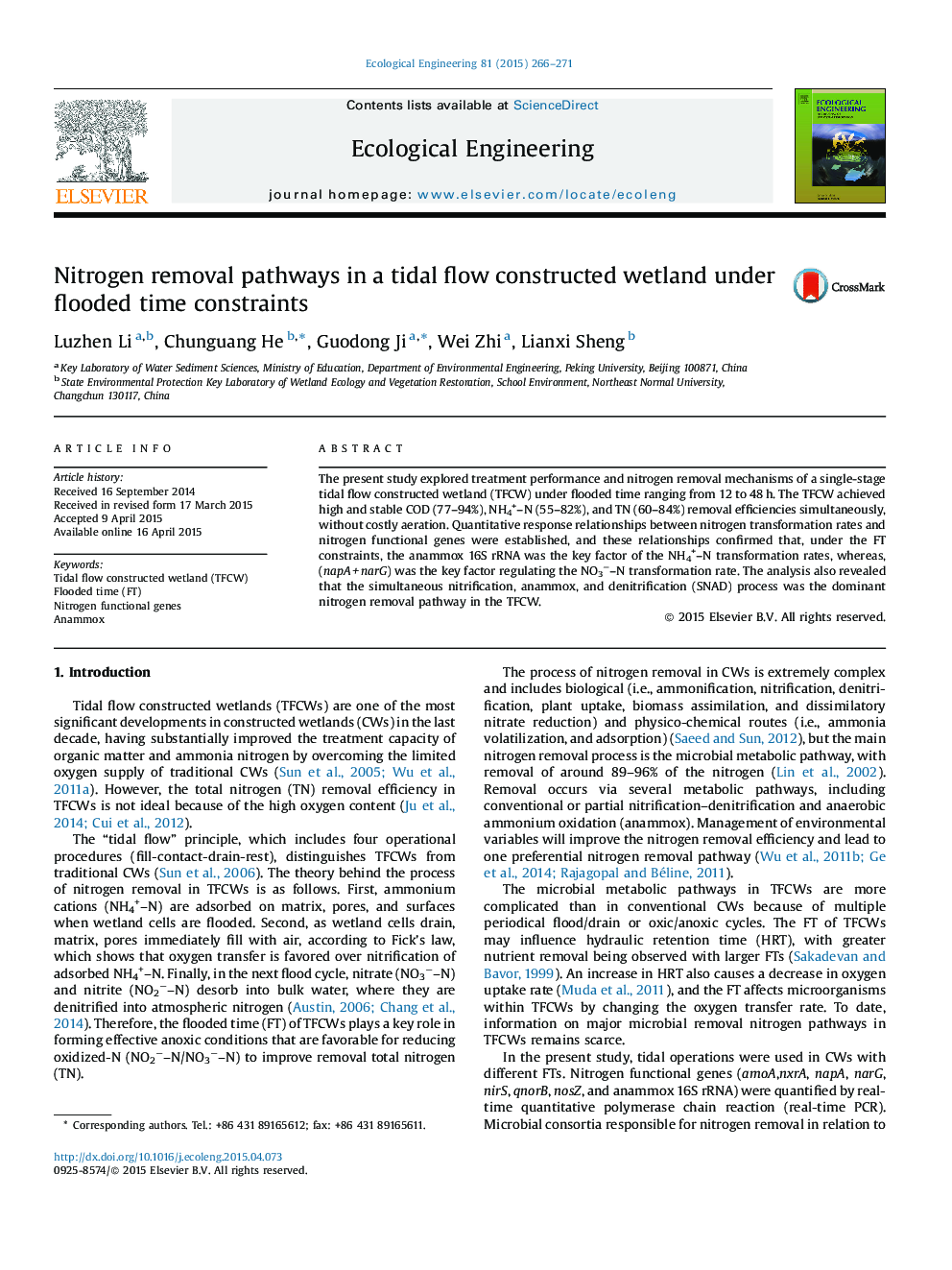| Article ID | Journal | Published Year | Pages | File Type |
|---|---|---|---|---|
| 4389081 | Ecological Engineering | 2015 | 6 Pages |
•Flooded time (FT) showed significant effects on treatment performance in TFCWs.•The key factor of the NH4+–N and TN transformation rates was anammox 16S rRNA.•The dominant nitrogen removal pathway in the TFCW was the simultaneous nitrification, anammox and denitrification (SNAD) process.
The present study explored treatment performance and nitrogen removal mechanisms of a single-stage tidal flow constructed wetland (TFCW) under flooded time ranging from 12 to 48 h. The TFCW achieved high and stable COD (77–94%), NH4+–N (55–82%), and TN (60–84%) removal efficiencies simultaneously, without costly aeration. Quantitative response relationships between nitrogen transformation rates and nitrogen functional genes were established, and these relationships confirmed that, under the FT constraints, the anammox 16S rRNA was the key factor of the NH4+–N transformation rates, whereas, (napA + narG) was the key factor regulating the NO3−–N transformation rate. The analysis also revealed that the simultaneous nitrification, anammox, and denitrification (SNAD) process was the dominant nitrogen removal pathway in the TFCW.
Graphical abstractFigure optionsDownload full-size imageDownload as PowerPoint slide
